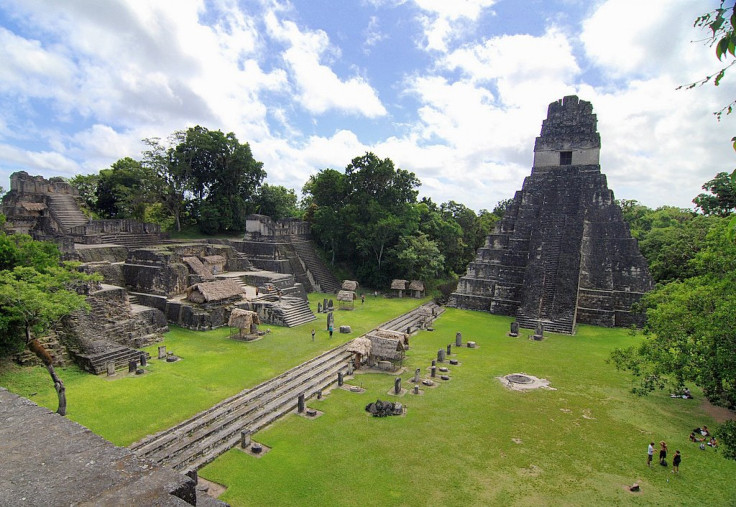Mayan Calendar 2012: What’s Really Happening In Guatemala

Perhaps it’s only natural that, as Dec. 21 approaches, many have found supposed connections between their views of the Mayan calendar and the prophecies of Nostradamus, the alignment of celestial bodies and even the Bible. Perhaps it’s just human nature that a whole host of people are trying to make a quick buck out of terrifying the world with various doomsday theories -- out of selling books, making movies and drawing a hefty profit off their “official” 2012 end of the world websites.
Yet, as Dr. David Stuart, professor of Mesoamerican art and writing at the University of Texas at Austin, points out in his book “The Order Of Days: The Maya World and the Truth About 2012,” the paranoia says a lot more about us than it does about the Maya.
“It’s as if the ancient Maya could somehow anticipate the fears and struggles we experience in our modern industrial life and offered a mystical end game we could look forward to,” he writes. “No such luck. The truth of the matter is that the Maya calendar was inseparable from the ancient world that created it: a lost worldview of kings, gods and ancestors. By wrenching this special vision of time and cosmology away from that particular cultural and historical milieu, we do nothing more than manipulate the past for our own purposes and messages.”
“The truth is no Maya text -- ancient, colonial or modern -- ever predicted the end of time or the end of the world,” he continues.
The current doomsday theories stem from an interpretation of a single set of tablets discovered in the 1960s at the archeological site of Tortuguero in the Mexican state of Tabasco that depict the return of a Maya god at the end of a 13th period.
Indeed, many of the theories swirling around on the Internet offer an extremely loose interpretation of what the Maya actually believed. The great civilization reached its peak between 250 and 900 A.D. and was fascinated by mathematics, astronomy and the cycles of time. Its Long Count calendar began in 3114 B.C. and moves forward in 394-year periods known as bak’tuns. The winter solstice in 2012 marks the completion of the 13th bak’tun.
Epigraphists say the prophecy foretells the beginning of a new era, according to the traditional Long Count calendar, but argue that the Maya never mentioned that the world nor time would end. Several other Maya ruins, after all, describe dates far beyond 2012.
Nevertheless, the occasion has offered Mayanists and the local Maya themselves a soapbox from which to show the world the intricacies of one of its greatest and still mysterious civilizations. But for a while, it was looking like Guatemala, the cradle of the Maya world, would exploit the doomsday for financial gain.
The AFP ran a widely circulated story, which is still making rounds, that the Culture Ministry had invited some of the world’s biggest celebrities to a “World Summit for Humanity” on Dec. 20 and Dec. 21. in Tikal, one of the most important Maya archeology sites. Culture Minister Carlos Batzin told the news organization he had invited artists such as Neil Young, Bruce Springsteen, Elton John, U2 and Placido Domingo to attend.
Since then, several news outlets have suggested that all of these artists would, in fact, be in Guatemala “for the end of the world.” But Carla Molina, president of Ecotourism & Adventure Specialists, said, “You can rest assured there will be no laser beams and no U2 in Tikal.”
“It’s been very complicated this year, because we have a new government, and they didn’t have a very big sensitivity for the indigenous people. They wanted to bring Bono and U2, and we thought ‘we will just look ridiculous in the eyes of the world,’ not to mention the fact that it would go against the laws of our cultural heritage sites.”
So, her organization and others banded together to fight something they believed was of “the utmost inappropriate nature.” Instead of a celebrity-packed spectacle, the ceremony in Tikal will now feature something far more appropriate: Ajq'ij, ceremonial priests or spiritual guides in charge of counting the days.
The Ajq’ij will usher in the new era on Dec. 21 -- one that will not be of the corn people (as it is now), but of the men of honey, who are in harmony with nature and, like bees, only take from it what they need, according to legend.
Molina’s organization will be on hand to help assist park guards in translating the ceremony to the large crowds expected at the event, and, though Tikal is expected to be busy, limited accommodation and strict rules for the national parks announced on Monday will keep the site from looking too apocalyptic. After all, Molina said it will be more like a church service than a doomsday concert.
© Copyright IBTimes 2024. All rights reserved.






















